I'm trying to make tensorflow mfcc give me the same results as python lybrosa mfcc i have tried to match all the default parameters that are used by librosa in my tensorflow code and got a different result
this is the tensorflow code that i have used :
waveform = contrib_audio.decode_wav(
audio_binary,
desired_channels=1,
desired_samples=sample_rate,
name='decoded_sample_data')
sample_rate = 16000
transwav = tf.transpose(waveform[0])
stfts = tf.contrib.signal.stft(transwav,
frame_length=2048,
frame_step=512,
fft_length=2048,
window_fn=functools.partial(tf.contrib.signal.hann_window,
periodic=False),
pad_end=True)
spectrograms = tf.abs(stfts)
num_spectrogram_bins = stfts.shape[-1].value
lower_edge_hertz, upper_edge_hertz, num_mel_bins = 0.0,8000.0, 128
linear_to_mel_weight_matrix =
tf.contrib.signal.linear_to_mel_weight_matrix(
num_mel_bins, num_spectrogram_bins, sample_rate, lower_edge_hertz,
upper_edge_hertz)
mel_spectrograms = tf.tensordot(
spectrograms,
linear_to_mel_weight_matrix, 1)
mel_spectrograms.set_shape(spectrograms.shape[:-1].concatenate(
linear_to_mel_weight_matrix.shape[-1:]))
log_mel_spectrograms = tf.log(mel_spectrograms + 1e-6)
mfccs = tf.contrib.signal.mfccs_from_log_mel_spectrograms(
log_mel_spectrograms)[..., :20]
the equivalent in librosa: libr_mfcc = librosa.feature.mfcc(wav, 16000)
the following are the graphs of the results:

